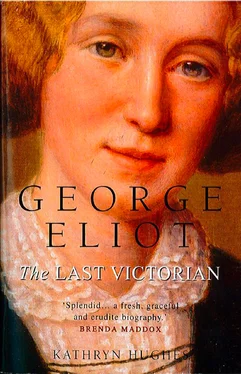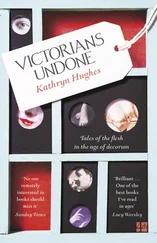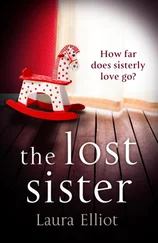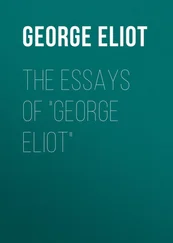You will think me interminably loquacious, and still worse you will be ready to compare my scribbled sheet to the walls of an Egyptian tomb for mystery, and determine not to imitate certain wise antiquaries or antiquarian wiseacres who ‘waste their precious years, how soon to fail?’ in deciphering information which has only the lichen and moss of age to make it more valuable than the facts graphically conveyed by an upholsterer’s pattern book. 40
Ironically, the end point of this dance between advance and withdrawal was a dazzling display of learning and verbal dexterity, seen here in the elaborate comparison of her handwriting with Egyptian hieroglyphics. In these bursts of words we begin to see Mary Ann flushed with pleasure as she realises what she is capable of. For if literature was forbidden as sinful, language was somehow another matter. In May 1840 she sings to Maria, ‘I am beguiled by the fascinations that the study of languages has for my capricious mind, and could e’en give myself up to making discoveries in the world of words.’ 41 Eighteen months later she crows, ‘I love words; they are the quoits, the bows, the staves that furnish the gymnasium of the mind.’ 42
These early letters, with their see-sawing between assertion and self-denial, were the crucible in which Eliot’s mature prose style was formed. At this point Mary Ann had very little real sense of her correspondent as a real and separate person with problems of her own. There are a few sympathetic noises when Maria describes a particularly unpleasant row with her employers, but the focus quickly shifts back to Mary Ann. Maria Lewis functioned as a kind of imaginary audience, whose reactions were to be anticipated and described by Mary Ann herself, with no reference to what was really felt or thought. 43 This inventing of Miss Lewis’s response to her loquacity is the embryo of a stylistic practice which Eliot was to employ heavily at the beginning of her novel-writing career. In Scenes of Clerical Life , for instance, she often breaks off her narrative to deal with an imaginary reader’s response. Of Mr Gilfil, for instance, ‘You already suspect that the Vicar did not shine in the more spiritual functions of his office.’ 44
The letters to Martha Jackson are different. Martha had attended the Franklin school where she was a pale imitation of Mary Ann, being both clever and ‘serious’ in her religion. Now back at home with her parents, Martha continued to be edgy about Mary Ann’s intellectual superiority. In January 1840 Mary Ann, perhaps anticipating slow progress on the ecclesiastical chart, sent a warning shot to Martha not to tread too closely on her patch. ‘I am right glad to read of your enjoyments … and of your determination to study, though, by the bye, it is hardly fair of you to trench on my field; I shall have you publishing metaphysics before my work is ready, a result of the superior development of a certain region of your brain over that of my poor snailship.’ 45
Even this was not sufficient to deter the thick-skinned Martha, who wrote back demanding a list of every book that Mary Ann was currently reading. Clearly the time had come to sort out questions of pre-eminence once and for all. In her next letter Mary Ann suggested that they should organise their correspondence around a series of set topics, turning their letters into virtual essays. At this point Martha sensibly withdrew from the fray. The next time we hear from her she has taken up the girlish hobby of flower names, rechristening her friends according to their particular characteristics. Mary Ann has been assigned ‘Clematis’ which means ‘mental beauty’. Martha, meanwhile, has become ‘Ivy’ which refers to ‘constancy’ but which, as Mary Ann quickly points out in a letter of 30 July 1840, is also a creeping parasite. 46
In these letters to Martha, Mary Ann was careful to stress how little time she had for study and so, by implication, how wonderfully she was doing in the circumstances. ‘Pity the sorrows of a poor young housekeeper,’ she intoned on 6 April 1840, ‘and determine to make the very best use of your present freedom therefrom .’ Later, in case Martha had missed the point, she continued, ‘I am conscious of having straitened myself by the adoption of a too varied and laborious set of studies, having so many social duties; otherwise circumstanced I might easily compass them all.’ 47
Competitiveness with Martha aside, Mary Ann’s frustration about the small amount of time available to her was pressing and real. The ecclesiastical chart never got off the ground. Before she was even near to finishing it, another appeared on the market in May 1840. Pretending not to mind, she declared it ‘far superior in conception to mine’ and made a show of recommending it to friends. 48 The combined duties of housekeeper, hostess, companion and charity worker were so time-consuming that even personal letters could rarely be written at one sitting. ‘I am obliged to take up my letter at any odd moment,’ she wrote to Maria Lewis on 7 November 1838, ‘so you must excuse its being rather a patchwork, or to try to appear learned, a tessellated or mosaic affair.’ 49 And even when she did manage to write, her other life often inscribed itself on the paper: ‘I write with a very tremulous hand as you will perceive; both this and many other defects in my letter are attributable to a very mighty cause – no other than the boiling of currant jelly.’ 50
This rigorous schedule of early mornings and late evenings crammed with private study was by no means unique to Mary Ann Evans. Florence Nightingale was doing the same thing in nearby Lea Hurst. So was Elizabeth Barrett in Wimpole Street. So were hundreds of other nameless middle-class girls who yearned for a life which went beyond the trivialities of the parlour and the store cupboard. What made Mary Ann Evans special was not simply her energy and determination, but also her ability to master a range of subjects far beyond the curriculum of even the best ladies’ seminary. A letter written to Maria Lewis on 4 September 1839 demonstrates both the strengths and limitations of this kind of self-education. Mary Ann’s use of the geological metaphor not only indicates that her reading was now straying beyond the strictly religious, but that she was acquainted with the new scientific discoveries which would soon shake orthodoxy to its core. More immediately, it articulates her secret terror that, without the advantages of a formal education, her reading might lack fruitful cohesion, amounting in the end to nothing more than accumulated junk.
I have lately led so unsettled a life and have been so desultory in my employments, that my mind, never of the most highly organized genus, is more than usually chaotic, or rather it is like a stratum of conglomerated fragments that shews here a jaw and rib of some ponderous quadruped, there a delicate alto-relievo of some fernlike plant, tiny shells, and mysterious nondescripts, encrusted and united with some unvaried and uninteresting but useful stone. My mind presents just such an assemblage of disjointed specimens of history, ancient and modern, scraps of poetry picked up from Shakspeare, Cowper, Wordsworth and Milton, newspaper topics, morsels of Addison and Bacon, Latin verbs, geometry entomology and chemistry, reviews and metaphysics, all arrested and petrified and smothered by the fast thickening every day accession of actual events, relative anxieties, and household cares and vexations. 51
Life at Griff may have been tense between 1838 and 1840, but not enough to explain the constant depressions and headaches which dogged Mary Ann. In her letters to Maria Lewis, who was in the genuinely stressful position of working and living with people who did not value her, she complains constantly of ‘low’ spirits and whole days lost in generalised unwellness. This was the beginning of a set of symptoms that was to plague her for the next forty years, becoming particularly acute whenever she was wrestling with her writing. Whole years of her life – 1862 and 1865 stand out especially – were lost to misery and migraine as she battled with Romola, The Spanish Gypsy and Felix Holt, The Radical .
Читать дальше












